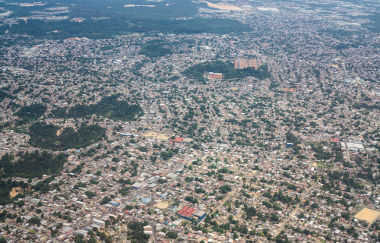THE Manaus Free Zone is a business and industrial area created in the city of Manaus, capital of the State of Amazonas, whose main objective is to attract companies and promote greater occupation and territorial integration with the northern region of the country. Currently, there are more than 500 companies installed on their domains.
Officially, in the Decree of Law No. 288, of February 28, 1967, the Manaus Free Trade Zone is:
“an area of free trade in imports and exports and special tax incentives, established with the purpose of creating an industrial, commercial and agriculture endowed with economic conditions that allow its development, in view of the local factors and the great distance, to which the consumer centers of its products".
Therefore, just in the official definition, we have already identified some basic characteristics of the Manaus Free Trade Zone, namely:
a) the existence of special tax incentives, that is, the granting of tax exemption and other benefits for companies and industries that settle in this region;
b) the objective of industrializing and commercially and economically developing the Amazon region in its interior, having in given the difficulty of obtaining products from other locations due to the great distances and difficulties in the transport;
c) the development of the industrial, commercial and agricultural sectors, which means a greater incentive to the process of occupation of the Amazon and the interiorization of the territory;
The special tax incentives mentioned above were only expected to last until 1997. However, fearing the flight of companies from the region, the Brazilian government has several times extended its closure, first to 2013, then to 2023 and, finally, to 2073.
The construction of the Manaus Free Trade Zone took place during the period of greatest growth in Brazil's industrialization process. Even so, this fact is seen as a kind of “point outside the curve” of Brazilian industrialization, considering that most companies, investments and installations were concentrated in the Southeast region of the parents.
Originally, from a legal point of view, the creation of the Manaus Free Trade Zone took place during the government of Juscelino Kubitschek. However, its inauguration in practical terms only came to fruition during the military dictatorship, in 1967. The military even showed great concern and several attempts to promote greater occupation of the territory of the Amazon, especially with the aim of guaranteeing the sovereignty of a practically unpopulated area in the parents. The official motto was: “integrate not to deliver”.

The creation of the Free Zone contributed to greater urbanization in the city of Manaus
The Manaus Free Trade Zone is managed by the Suframa (Superintendence of the Manaus Free Trade Zone), an autarchy responsible for managing, publicizing and maintain the area in question, being subordinate to the Ministry of Development, Industry and Commerce Exterior.
In addition, the main characteristic of the Manaus Free Trade Zone is the fact that it is made up of three economic poles: commercial, industrial and agricultural. The commercial hub was created in the 1980s and was more active when the Brazilian economy was very closed to the foreign market. The industrial hub, on the other hand, is the main activity in the region, responsible for most of the jobs generated and the capital moved. The agricultural hub, in turn, operates mainly in the agro-industrial activity and also in other links, such as the sale of wood, fish farming, among others.
The main industrial products manufactured in the Manaus Free Trade Zone are: TVs, cell phones, vehicles, sound and video, air conditioners, bicycles, microcomputers and chips, transmitter/receiver devices, among others.
The existence of the Manaus Free Trade Zone and other industrial and business centers across the country is inserted in the context of Industry Location Factors, which include a series of basic elements to attract companies to a region in order to generate jobs and move the economy.
By Me. Rodolfo Alves Pena
Source: Brazil School - https://brasilescola.uol.com.br/brasil/zona-franca-manaus.htm

